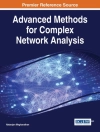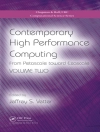Load Balancing in Parallel Computers: Theory and Practice is about the essential software technique of load balancing in distributed memory message-passing parallel computers, also called multicomputers. Each processor has its own address space and has to communicate with other processors by message passing. In general, a direct, point-to-point interconnection network is used for the communications. Many commercial parallel computers are of this class, including the Intel Paragon, the Thinking Machine CM-5, and the IBM SP2. Load Balancing in Parallel Computers: Theory and Practice presents a comprehensive treatment of the subject using rigorous mathematical analyses and practical implementations. The focus is on nearest-neighbor load balancing methods in which every processor at every step is restricted to balancing its workload with its direct neighbours only. Nearest-neighbor methods are iterative in nature because a global balanced state can be reached through processors’ successive local operations. Since nearest-neighbor methods have a relatively relaxed requirement for the spread of local load information across the system, they are flexible in terms of allowing one to control the balancing quality, effective for preserving communication locality, and can be easily scaled in parallel computers with a direct communication network. Load Balancing in Parallel Computers: Theory and Practice serves as an excellent reference source and may be used as a text for advanced courses on the subject.
Francis C.M. Lau & Chenzhong Xu
Load Balancing in Parallel Computers [PDF ebook]
Theory and Practice
Load Balancing in Parallel Computers [PDF ebook]
Theory and Practice
购买此电子书可免费获赠一本!
语言 英语 ● 格式 PDF ● ISBN 9780585272566 ● 出版者 Springer US ● 发布时间 2007 ● 下载 3 时 ● 货币 EUR ● ID 4669113 ● 复制保护 Adobe DRM
需要具备DRM功能的电子书阅读器












